•Menu
•Tin đọc nhiều
-
 NSND
Thanh
Nam
và
nghệ
sĩ
Chí
Tâm
ngồi
ghế
nóng
"Chuông
vàng
vọng
cổ"
lần
thứ
19
-
2024
NSND
Thanh
Nam
và
nghệ
sĩ
Chí
Tâm
ngồi
ghế
nóng
"Chuông
vàng
vọng
cổ"
lần
thứ
19
-
2024 -
 Tâm
Sự
Thần
Y
4.0
Tâm
Sự
Thần
Y
4.0 -
 Thông
diệp
của
cải
lương
điện
ảnh
Thông
diệp
của
cải
lương
điện
ảnh -
 Nhiều
người
trẻ
tâm
huyết
với
nghệ
thuật
hát
bội
Nhiều
người
trẻ
tâm
huyết
với
nghệ
thuật
hát
bội -
 “Đêm
huyền
thoại”
quy
tụ
nhiều
ngôi
sao
sân
khấu
cải
lương
“Đêm
huyền
thoại”
quy
tụ
nhiều
ngôi
sao
sân
khấu
cải
lương -
 Thí
sinh
Lê
Hoàng
Nghi
đoạt
giải
Chuông
vàng
vọng
cổ
lần
thứ
19
–
năm
2024
Thí
sinh
Lê
Hoàng
Nghi
đoạt
giải
Chuông
vàng
vọng
cổ
lần
thứ
19
–
năm
2024 - Giữ bản sắc cho cải lương tuồng cổ
-
 CAILUONGVIETNAM.COM
13/04/2004
-
13/04/2025
CAILUONGVIETNAM.COM
13/04/2004
-
13/04/2025
•Tin ngẫu nhiên
-
 Nghệ
sĩ
cải
lương
Vũ
Minh
Vương
qua
đời
Nghệ
sĩ
cải
lương
Vũ
Minh
Vương
qua
đời -
 Duyên
nợ
với
hình
tượng
anh
hùng
dân
tộc
Duyên
nợ
với
hình
tượng
anh
hùng
dân
tộc -
 Nghệ
nhân
mòn
mỏi
chờ
xét
tặng
danh
hiệu
Nghệ
nhân
mòn
mỏi
chờ
xét
tặng
danh
hiệu -
 Nỗi
buồn
giấu
kín
của
Hoài
Linh,
Minh
Vượng
Nỗi
buồn
giấu
kín
của
Hoài
Linh,
Minh
Vượng -
 Tinh
gọn
Chiếc
áo
thiên
nga
Tinh
gọn
Chiếc
áo
thiên
nga -
 Trao
tặng
Huân
chương
Lao
động
hạng
ba
cho
soạn
giả
Viễn
Châu
Trao
tặng
Huân
chương
Lao
động
hạng
ba
cho
soạn
giả
Viễn
Châu -
 Bài
vọng
cổ
‘Dưới
Cổng
Trường
Làng’
của
Quy
Sắc
Bài
vọng
cổ
‘Dưới
Cổng
Trường
Làng’
của
Quy
Sắc -
 Soạn
giả
Nguyên
Thảo
qua
đời
vì
ung
thư,
hưởng
thọ
78
tuổi
Soạn
giả
Nguyên
Thảo
qua
đời
vì
ung
thư,
hưởng
thọ
78
tuổi -
 "70%
nghệ
sĩ
nổi
tiếng
là
những
người
rất
ác"
"70%
nghệ
sĩ
nổi
tiếng
là
những
người
rất
ác" -
 Giải
“Bông
lúa
vàng”
lần
thứ
X
năm
2013:
Hồ
Nhật
Tài
đoạt
Huy
chương
Vàng
Giải
“Bông
lúa
vàng”
lần
thứ
X
năm
2013:
Hồ
Nhật
Tài
đoạt
Huy
chương
Vàng
•Thống kê truy cập
![]() Đang
truy
cập
:
184
Đang
truy
cập
:
184
•Máy chủ tìm kiếm : 40
•Khách viếng thăm : 144
![]() Hôm
nay
:
10433
Hôm
nay
:
10433
![]() Tháng
hiện
tại
:
599868
Tháng
hiện
tại
:
599868
![]() Tổng
lượt
truy
cập
:
100882397
Tổng
lượt
truy
cập
:
100882397
 »
Tin
Tức
»
English
»
Tin
Tức
»
English

CAILUONGVIETNAM.COM 13/04/2004 - 13/04/2025
Sắp tới đây là kỷ niệm 21 năm ngày thành lập trang web cailuongvietnam.com (13/04/2004 - 13/04/2025) Dây là trang tin tức đầu tiên của cailuongvietnam.com từ năm 2004. Còn đuọc gọi là CLVNCOM1 . Thân mời các dộc giả xem những bằi mới hơn tại trang tin tưc CLVNCOM2 theo link dưới dây https://www.cailuongvietnam.com/newscl
The Meaning of TET
Đăng lúc: Thứ tư - 18/02/2015 10:09 - Đã xem: 5194To regard Tet simply as New Year, as one would in the West, would display a poor knowledge of the people of Vietnam.
|
In spite of its impressive credentials, the Gregorian New Year has not been generally accepted in Vietnam, in the countryside in particular. Our people pay it a courteous homage but reserve their heart and soul for the traditional Tet. Tet falls sometime between the last ten days of January and the middle part of February. For a nation of farmers attached to the land for millennia, it has always been a festival marking the commUNI0N of man with nature. In the flow of seasons it is a pause during which both the field and the tiller enjoy some rest after twelve months of labor. In this period of universal renewal the Vietnamese man feels surging within himself a fountain of youth. That feeling explains many fine customs: in the New Year all action should be pure and beautiful for it may be an omen foretelling events in the twelve months that follow. For three days, one takes extra care not to show anger and not to be rude to people. The most nagging mother-in-law will make peace with her daughter-in-law; a quarreling couple will smile pleasantly at each other; the new world should be the best of worlds. When the holiday ends, people will resume their activities in a new spirit following so-called opening rituals in which the ploughman will open the first furrow, the official applies his seal to the first document, the scholar trace the first character with his pen brush, the trader receives his first customer. As a rule, all members of the extended family try to spend the holiday (the idiom used is to “eat Tet”) together under the same roof. Children vow to be well-behaved and are often given gifts of cash wrapped in red paper. Several times a day, joss-sticks are lit on the family altar and offerings made of food, fresh water, flowers and betel. Family graves are visited, generally, before the end of the ‘outgoing’ year; fences are mended and the burial mounds tidied up. The Vietnamese Tet is an occasion for an entire people to share a common ideal of peace, concord and mutual love. I know of no communal celebration with more humanistic character.
(Excerpted
from
Sketches
for
A
Portrait
of
Vietnamese
Culture,
by
Huu
Ngoc) CUNG CHUC TAN XUAN Tet Nguyen Dan, is the lunar New year Festival and it is the most important Vietnamese holiday. Tet is the celebration of the beginning of spring as well as a new year. It is the time for family reUNI0Ns, exchanging gifs, best wishes and the beginning of a new year. PHAO NO
The holiday is also observed by a family visit to the church or pagoda to pray for good fortune and happiness. A sprig of the yellow blossomed. HOA MAI, is used to decorate the home. Tet officially lasts for seven days and ends with LE KHAI HA ritual during which CAY NEU is taken down. AO DAI
LE TAO QUAN Feast of the Household Gods, this holiday falls on the twenty-third of the twelfth month of the lunar year. The holiday marks the day on which the chief guardian spirit of the kitchen returns to heaven to report on the activities of the family. A new spirit is then assigned to the household for the coming year to replace the previous one. On the day of Le Tao Quan, each family pays tribute to the kitchen God. This includes buring sacrificial gold paper and offering a fish )carp_ for him to ride om his journey to heaven. LE GIAO THUA The transition hour between the old year and the new year. It is one of the most importamt times during the TET holidays. It occurs at the midnight hour on New Year''s Eve. GIAO THUA is the time when a family ushers out the spirits of the old year, a ritual called LE TRU TICH. It is especially important to give a warm welcome to the Spirit of the Hearth, TAO QUAN, who has been to visit the Jade Emperor, Drums, gongs and firecrackers announced the hour of LE GIAO THUA CAY NEU A bamboo pole (New Year''s Tree) stripped of its leaves except for a tuft on top. Red papaer decorates the tree which is planted outside the house during the Tet holidays. It is supposed to ward off the evil spririts during absence of the Spririt of the Hearth who leaves the family at this time to visit the palace of the Jade Emperor. See more... CAU DOI A literary art form of Chinese origin (parallel sentences). A cau doi, "sentence pair", consists of two sentences or lines. Each line corresponds with the other meaning as well as tone pattern and individual word meaning. The cau doi is usually used to convey good wishes on the Tet holidaya. It is highly specialized form of poetry. |
Nguồn tin: saigoninfo.com
Những tin mới hơn
- Please, it's not Chinese New Year! (28/02/2015)
- Tomb of Vietnamese marshal draws crowds during Tet (20/02/2015)
Những tin cũ hơn
- Residents flock to flower markets for decorating Tet holidays (15/02/2015)
- Cai luong historical play celebrates King Mai Hac De’s Uprisings (27/01/2015)
- Actress Thanh Thanh Hoa – The Gold Medalist of the Prestigious Thanh Tam Award in 1961 (19/01/2015)
- That’s how they celebrate Christmas in Vietnam, how about you? (24/12/2014)
- Folk music playing and singing contest kicked off (09/12/2014)
- Vietnam National Drama Theater hits city stage (05/12/2014)
- “Two Women” triumphs at Hanoi film fest (30/11/2014)
- Behind the smiles of Vietnam’s flight attendants (11/11/2014)
- Quang Ngai’s beautiful beaches attract visitors (05/11/2014)
- Science Film Festival focuses on future technologies (20/10/2014)
Mã
an
toàn:
![]()
•CHUYỂN ĐẾN WEBSITE...
•Tin mới nhất
-
 CAILUONGVIETNAM.COM
13/04/2004
-
13/04/2025
CAILUONGVIETNAM.COM
13/04/2004
-
13/04/2025 -
 Thí
sinh
Lê
Hoàng
Nghi
đoạt
giải
Chuông
vàng
vọng
cổ
lần
thứ
19
–
năm
2024
Thí
sinh
Lê
Hoàng
Nghi
đoạt
giải
Chuông
vàng
vọng
cổ
lần
thứ
19
–
năm
2024 - Giữ bản sắc cho cải lương tuồng cổ
-
 “Đêm
huyền
thoại”
quy
tụ
nhiều
ngôi
sao
sân
khấu
cải
lương
“Đêm
huyền
thoại”
quy
tụ
nhiều
ngôi
sao
sân
khấu
cải
lương -
 Tâm
Sự
Thần
Y
4.0
Tâm
Sự
Thần
Y
4.0 -
 Thông
diệp
của
cải
lương
điện
ảnh
Thông
diệp
của
cải
lương
điện
ảnh -
 NSND
Thanh
Nam
và
nghệ
sĩ
Chí
Tâm
ngồi
ghế
nóng
"Chuông
vàng
vọng
cổ"
lần
thứ
19
-
2024
NSND
Thanh
Nam
và
nghệ
sĩ
Chí
Tâm
ngồi
ghế
nóng
"Chuông
vàng
vọng
cổ"
lần
thứ
19
-
2024 -
 Nhiều
người
trẻ
tâm
huyết
với
nghệ
thuật
hát
bội
Nhiều
người
trẻ
tâm
huyết
với
nghệ
thuật
hát
bội -
 Nghệ
sĩ
Bích
Thuận
qua
đời
Nghệ
sĩ
Bích
Thuận
qua
đời -
 Vở
"Sấm
vang
dòng
Như
Nguyệt"
-
dấu
ấn
mới
của
NSƯT
Chí
Linh,
Vân
Hà
Vở
"Sấm
vang
dòng
Như
Nguyệt"
-
dấu
ấn
mới
của
NSƯT
Chí
Linh,
Vân
Hà
•Đăng nhập thành viên
- Những Vở Diễn Hay KIỆT TÁC SÂN KHẤU THẾ GIỚI: LÔI VŨ
- Nghệ Sĩ Tâm Sự Ngọc Huyền 'vẫn bị cấm hát tại Việt Nam'
- Đời Thường Nghệ Sĩ Con dâu trẻ của NSUT Thoại Miêu qua đời chưa đầy 2 năm cưới
- Đời Thường Nghệ Sĩ Nghệ sĩ Tú Sương kết hôn với Việt kiều
- Tâm Tư Thành Viên Người trong giới tự nói gì về nghệ sĩ Mỹ Châu ?
- Trong bầu trời nghệ thuật sân khấu cải lương, nghệ sĩ Thành Được mãi là ngôi sao sáng vĩ đại. Ông đã...
- Tôi cũng biết một soạn giả có tên YÊN BA, nhưng tên thật là PHẠM DIỆP PHƯƠNG, là quân y, KBC 7019
- Bài viết khá đầy đủ về cuộc đời của thầy Văn Hải. Có vài lỗi chính tả không nên có
- thag điên nai ma diên cai gi . toan bac chuoc nsut thanh nam . bat chuoc kieu ngu
- Tôi rất mong chờ để được xem cải lương nhưng thật thất vọng.
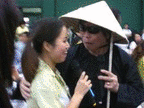
CAILUONGVIETNAM.COM 13/04/2004 - 13/04/2025
Sắp tới đây là kỷ niệm 21 năm ngày thành lập trang web cailuongvietnam.com (13/04/2004 - 13/04/2025) Dây là trang tin tức đầu tiên của cailuongvietnam.com từ năm 2004. Còn đuọc gọi là CLVNCOM1 . Thân mời các dộc giả xem những bằi mới hơn tại trang tin tưc CLVNCOM2 theo link dưới dây https://www.cailuongvietnam.com/newscl

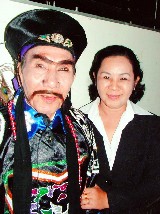
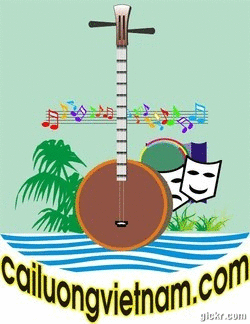
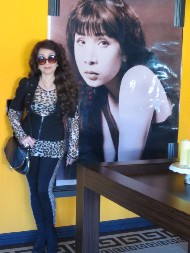



 Literally,
Tet
Nguyen
Dan
means
the
first
morning
of
the
first
day
of
the
new
period.
Officially,
it
marks
the
beginning
of
a
new
year
on
the
lunar
calendar.
In
reality,
it
is
a
friendly,
festive,
family
holiday.
Painstaking
care
is
given
to
starting
the
year
out
right,
since
it
is
beleived
the
first
day
and
the
first
week
of
the
new
year
will
determine
the
fortunes
or
misfortunes
for
the
rest
of
the
year.
In
order
to
start
the
new
year
right
and
set
the
best
precedent,
vietnamese
houses
are
painted
and
cleaned.
New
clothes
are
purchased
for
the
first
day
of
Tet
and
old
debts
should
be
paid
and
great
care
is
taken
to
avoid
arguments.
Families
exchange
visits.
The
first
visitor
to
the
house
on
the
first
morning
of
Tet
is
very
important.
Particular
care
is
taken
to
arrange
in
advance
to
have
the
visitor
be
rich,
happy,
and
pretigious.
Literally,
Tet
Nguyen
Dan
means
the
first
morning
of
the
first
day
of
the
new
period.
Officially,
it
marks
the
beginning
of
a
new
year
on
the
lunar
calendar.
In
reality,
it
is
a
friendly,
festive,
family
holiday.
Painstaking
care
is
given
to
starting
the
year
out
right,
since
it
is
beleived
the
first
day
and
the
first
week
of
the
new
year
will
determine
the
fortunes
or
misfortunes
for
the
rest
of
the
year.
In
order
to
start
the
new
year
right
and
set
the
best
precedent,
vietnamese
houses
are
painted
and
cleaned.
New
clothes
are
purchased
for
the
first
day
of
Tet
and
old
debts
should
be
paid
and
great
care
is
taken
to
avoid
arguments.
Families
exchange
visits.
The
first
visitor
to
the
house
on
the
first
morning
of
Tet
is
very
important.
Particular
care
is
taken
to
arrange
in
advance
to
have
the
visitor
be
rich,
happy,
and
pretigious. AO
DAI
leterally
long
dress,
the
women''s
national
dress
of
Vietnam.
It
is
a
contoured,
full-length
dress
worn
over
black
or
white
loose-fitting
trousers.
The
dress
splits
into
a
front
and
back
panel
from
the
waist
down.
There
are
many
stylish
variations
in
color
and
collar
design.
Originally,
the
ao
dai
was
loosely
tailored
with
four
panels,
two
of
which
were
tied
in
back.
In
1932,
a
nationalistic
literacy
group
called
the
Tu
Luc
Van
Doan
designed
what
is
essentially
now
the
ao
dai.
A
similar
costume
is
worn
the
men
and
is
also
called
an
ao
dai.
However,
the
mans''dress
is
shorter
(knee
length)
and
more
loose-fitting.
The
color
of
the
brocade
and
the
embroidered
dragon
were
worn
only
by
the
Emperor.
Purple
was
the
color
reserved
for
high
ranking
mandarins
while
the
blue
was
worn
by
those
mandarins
of
lower
rank.
The
dresses
for
mourning
have
frayed
fringes
a
line
up
the
back
and
may
be
either
white
or
black,
although
white
is
the
standard
color
for
mourning.
AO
DAI
leterally
long
dress,
the
women''s
national
dress
of
Vietnam.
It
is
a
contoured,
full-length
dress
worn
over
black
or
white
loose-fitting
trousers.
The
dress
splits
into
a
front
and
back
panel
from
the
waist
down.
There
are
many
stylish
variations
in
color
and
collar
design.
Originally,
the
ao
dai
was
loosely
tailored
with
four
panels,
two
of
which
were
tied
in
back.
In
1932,
a
nationalistic
literacy
group
called
the
Tu
Luc
Van
Doan
designed
what
is
essentially
now
the
ao
dai.
A
similar
costume
is
worn
the
men
and
is
also
called
an
ao
dai.
However,
the
mans''dress
is
shorter
(knee
length)
and
more
loose-fitting.
The
color
of
the
brocade
and
the
embroidered
dragon
were
worn
only
by
the
Emperor.
Purple
was
the
color
reserved
for
high
ranking
mandarins
while
the
blue
was
worn
by
those
mandarins
of
lower
rank.
The
dresses
for
mourning
have
frayed
fringes
a
line
up
the
back
and
may
be
either
white
or
black,
although
white
is
the
standard
color
for
mourning.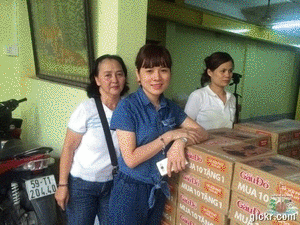


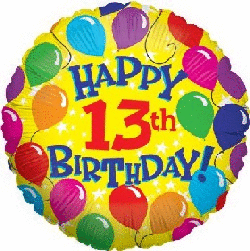
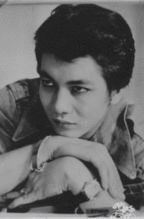
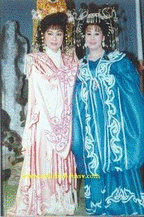


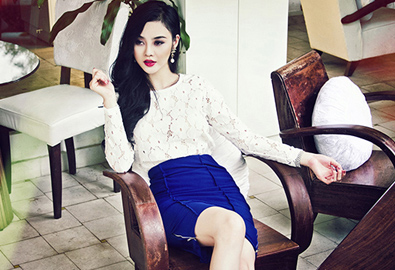









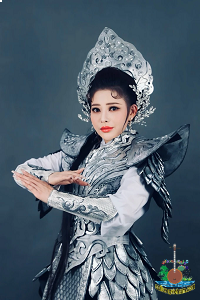

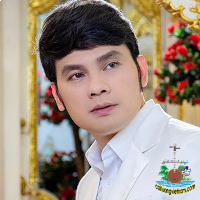
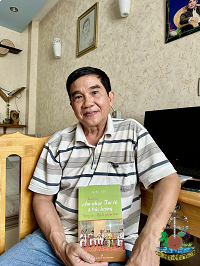










Ý kiến bạn đọc